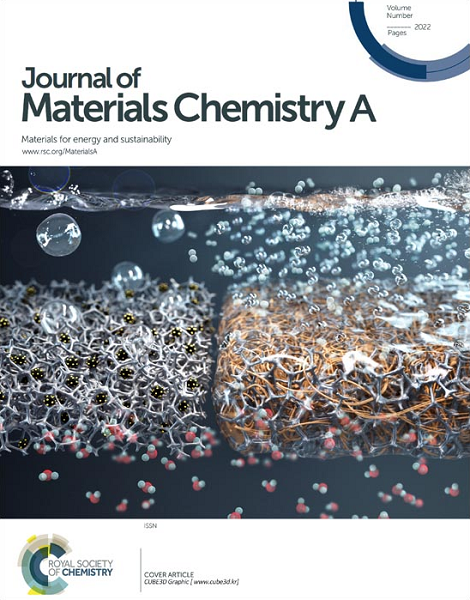使用高通量量子力学计算和定制机器学习模型连续构建稳定的氮氧化合物
IF 10.7
2区 材料科学
Q1 CHEMISTRY, PHYSICAL
引用次数: 0
摘要
氮和氧是大气中最丰富的两种元素,但仅由这两种元素组成的稳定化合物相对较少。构思新的稳定的氮氧化合物仍然是当前实验和理论研究的一个巨大挑战。在本研究中,我们开发了一种顺序构建策略,设计了168种具有不同结构创新的氮氧化合物,然后进行了高通量量子力学计算,并获得了尽可能高的精度。根据所得到的7820个结构和属性参数,我们创建了一个定制的机器学习模型,该模型在各种数据分割上的稳健性比通用模型高13.8%,在小数据集上实现了稳定和高性能。数据驱动的分析揭示了能量和电子相关特征是调节热力学稳定性的关键因素,而物理驱动的见解揭示了电子离域和超静约束可以微调机械稳定性。在所设计的氮氧化合物中,有106种比已知化合物N2O4更稳定,其中61种比N2O5更稳定。此外,它们的能量密度比目前使用的所有氮氧氧化剂的能量密度高出8.3-16.8%,突出了我们新提出的化合物在火箭双推进剂系统中的应用潜力。我们开发的机器学习平台具有用户友好的图形界面,易于评估,可能会引起其他领域的研究人员的兴趣,包括化学工业和能源部门。本文章由计算机程序翻译,如有差异,请以英文原文为准。

Sequential construction of stable nitrogen–oxygen compounds using high-throughput quantum mechanical calculations and customized machine learning model
Nitrogen and oxygen are the two most abundant elements in the atmosphere, yet stable compounds composed solely of these elements are relatively scarce. Conceiving novel stable nitrogen–oxygen compounds remains a formidable challenge for current experimental and theoretical research. In this study, we developed a sequential construction strategy to design 168 nitrogen–oxygen compounds with distinct structural innovation, followed by high-throughput quantum mechanical calculations with the highest possible accuracy. From the resulting 7820 structural and property parameters, we created a customized machine learning model that outperforms universal models in accuracy with 13.8% greater robustness across various data splits, achieving stable and high performance on small datasets. Data-driven analysis revealed the energy and electron-related characteristics as key factors in regulating thermodynamic stability, while physics-driven insights uncovered that electron delocalization and hyperstatic constraints fine-tune mechanical firmness. Among the designed nitrogen–oxygen compounds, 106 are expected to be more stable than the known compound N2O4, out of which 61 are expected to be even more stable than N2O5. Furthermore, their energy densities surpass those of all currently used nitrogen–oxygen oxidizers by 8.3–16.8%, highlighting our newly proposed compounds potential for use in rocket bipropellant systems. Our developed machine learning platform features a user-friendly graphical interface for easy assessment and may be of interest to researchers in other fields, including chemical industry and energy sectors.
求助全文
通过发布文献求助,成功后即可免费获取论文全文。
去求助
来源期刊

Journal of Materials Chemistry A
CHEMISTRY, PHYSICAL-ENERGY & FUELS
CiteScore
19.50
自引率
5.00%
发文量
1892
审稿时长
1.5 months
期刊介绍:
The Journal of Materials Chemistry A, B & C covers a wide range of high-quality studies in the field of materials chemistry, with each section focusing on specific applications of the materials studied. Journal of Materials Chemistry A emphasizes applications in energy and sustainability, including topics such as artificial photosynthesis, batteries, and fuel cells. Journal of Materials Chemistry B focuses on applications in biology and medicine, while Journal of Materials Chemistry C covers applications in optical, magnetic, and electronic devices. Example topic areas within the scope of Journal of Materials Chemistry A include catalysis, green/sustainable materials, sensors, and water treatment, among others.
 求助内容:
求助内容: 应助结果提醒方式:
应助结果提醒方式:


